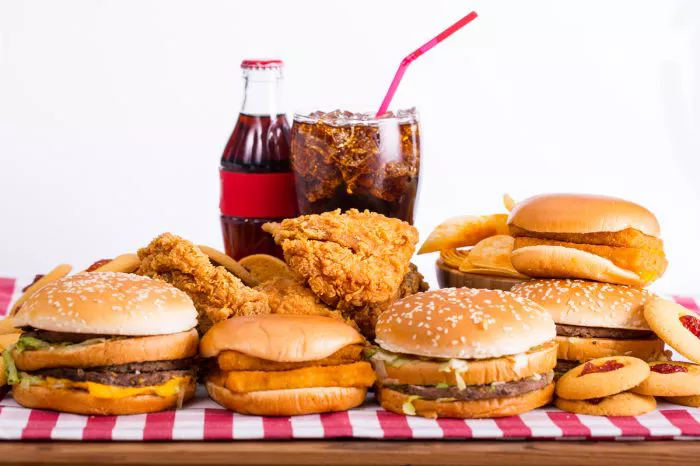Fast food has become a staple in the diets of many teenagers across the globe. This phenomenon is not just confined to any single country but is a widespread occurrence observed in various cultures and communities. Understanding why teenagers are drawn to fast food involves looking at various factors including the appeal of fast food itself, the lifestyle of teenagers, and broader social and economic factors. Below, we explore these aspects in depth to grasp why fast food is so irresistible to this age group.
Convenience And Speed
One of the primary reasons fast food is so popular among teenagers is its convenience. Teenagers today lead incredibly busy lives, with school responsibilities, extracurricular activities, and social commitments. Fast food restaurants, with their quick service and widespread availability, offer a quick solution for hunger that fits seamlessly into teenagers’ hectic schedules.
The ability to grab a meal in mere minutes is highly appealing. Moreover, many fast food joints offer drive-thru services, enhancing the convenience by allowing teens to purchase food without even leaving their cars.
Cost-Effectiveness
Fast food is also generally affordable, which makes it attractive to teenagers, who often have limited budgets. Chains like McDonald’s, Burger King” data-wpil-keyword-link=”linked”>Burger King, and Taco Bell” data-wpil-keyword-link=”linked”>Taco Bell offer items that are budget-friendly, and their promotional deals further entice cost-conscious teens. These establishments frequently provide value meals and student discounts, making their offerings even more accessible to the younger demographic.
Taste Preferences
Scientific studies have shown that teenagers have taste preferences that lean towards higher energy-dense foods, which are typically high in calories, fats, and sugars. Fast food, with its rich flavors and satisfying textures, caters perfectly to these preferences. The intense and immediate pleasure derived from consuming foods like burgers, fries, and shakes is linked to their chemical makeup, which stimulates the brain’s reward system. This sensory feedback loop encourages repeated consumption, establishing a pattern of eating behavior that can be hard to break.
Socialization
For many teenagers, fast food restaurants are more than just places to eat—they are venues to socialize. These establishments provide a relaxed atmosphere where teens can gather with friends without the pressure of high prices or formal dining etiquette. The casual setting of a fast food joint fits the social dynamics of teenagers, who value places where they can hang out, chat, and enjoy food together without significant adult supervision.
Marketing Strategies
Fast food companies are adept at marketing their products to the teenage demographic. They utilize a mix of traditional advertising, social media campaigns, and collaborations with popular celebrities to appeal directly to this age group. Many fast food ads are crafted to be humorous, edgy, and aligned with current trends, resonating strongly with teenagers.
Additionally, the use of technology, like apps for ordering and games that offer rewards or discounts, aligns well with the tech-savvy nature of today’s youth.
Cultural Influence
The portrayal of fast food in media and entertainment also plays a significant role in its popularity among teenagers.
Movies, TV shows, and online content often depict characters enjoying fast food, thus normalizing and even glamorizing its consumption. This cultural endorsement can influence teenagers’ attitudes towards fast food, making it a desirable choice.
Lack of Awareness or Concern About Health Risks
While awareness of the health implications of regular fast food consumption is increasing, many teenagers remain either unaware or unconcerned about the potential negative effects. The immediate gratification of tasty food often overshadows concerns about nutritional content and long-term health consequences. Furthermore, the invincibility mindset common among teenagers—the belief that they are unaffected by the issues that may affect others—can lead to dismissive attitudes toward health warnings.
Independence And Control
Choosing where and what to eat is one of the ways teenagers exercise independence. Being able to decide to grab a burger or a pizza without parental input is a form of autonomy. Fast food, easily accessible and generally approved by peers, provides a platform for asserting this independence.
Globalization And Availability
The global spread of fast food chains means that in many places around the world, these foods are readily available. This ubiquity makes fast food a default option for many teenagers, particularly in urban areas where such restaurants are often clustered near schools or other areas frequented by teens.
Conclusion
In conclusion, the popularity of fast food among teenagers can be attributed to a complex interplay of factors including convenience, cost, taste, marketing strategies, cultural influence, and a drive for socialization and independence. While the appeal is strong, it is also crucial for stakeholders in health and community sectors to guide teenagers towards making healthier dietary choices. Enhancing education about nutrition, increasing the availability and appeal of healthy foods, and continuing to regulate advertising directed at young people are essential steps in balancing the scales. Understanding why teenagers are drawn to fast food provides insights into not just their eating behaviors, but also broader societal trends and challenges.

